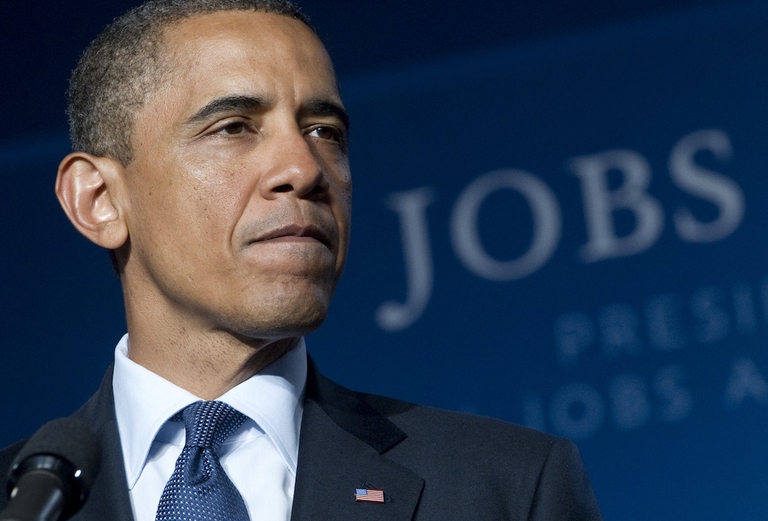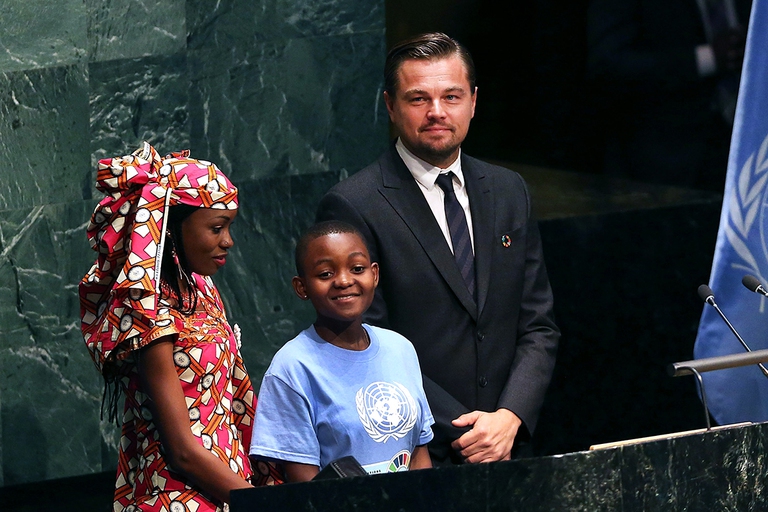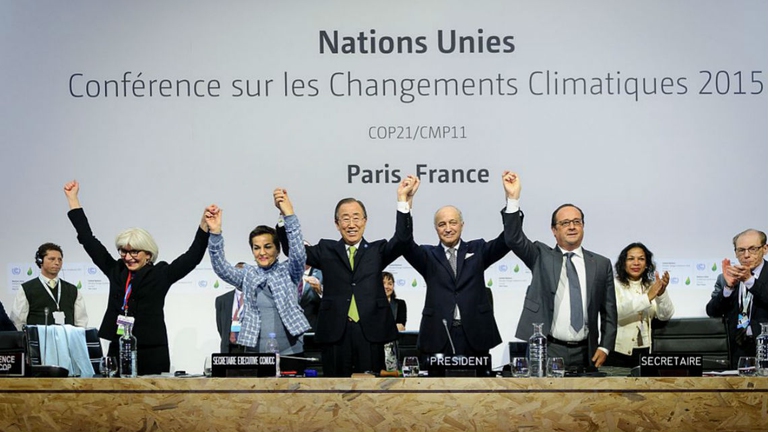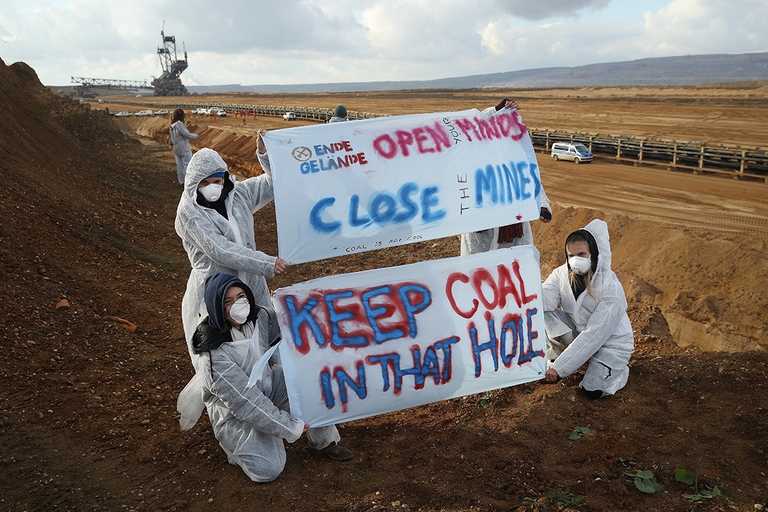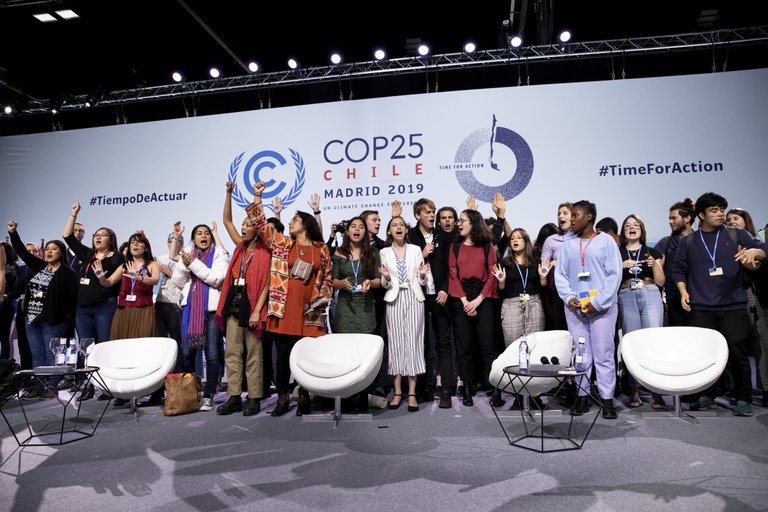
The 26th edition of the United Nations Climate Change Conference, COP26, will be held in Glasgow, Scotland in November 2020. The pre-COP will take place in Milan, Italy.
The year was 1992, and the world was beginning to see global warming as a serious threat. Below we recount the history of the UNFCCC Conferences of the Parties (COPs), without forgetting those who haven’t lost hope that even the staunchest climate change deniers can change their minds.
Climate change feels like a boring topic, far removed from people’s lives and often difficult to understand. The science is too technical to be taught in schools, let alone be included in national policymaking. What’s more, there’s no single theory about the causes and effects of global warming that has met the entire scientific community’s approval.
Read more: What is climate change
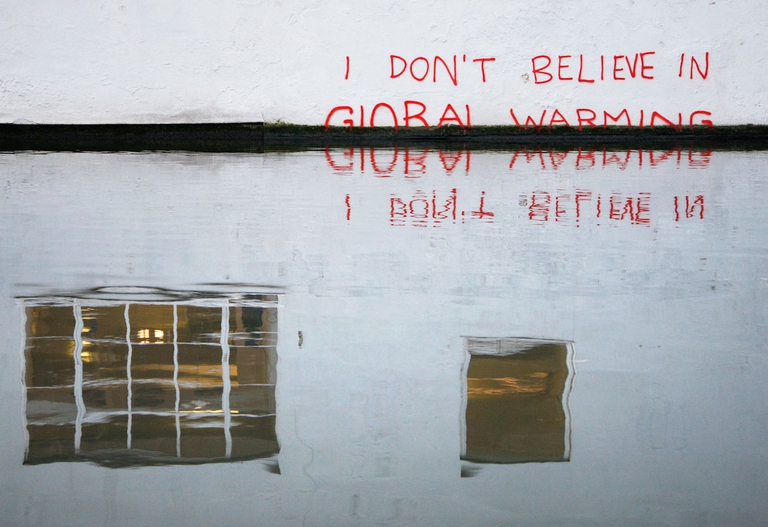
Reading through these lies and confronted with their absurdity, it’s hard to keep a straight face. Or more sensitive souls might resent them, at least. And yet, these are the stereotypes on which people have based – and still base – their attempts to discredit and marginalise one of the biggest threats and challenges facing humanity. The lies have been told for decades, at least since the United Nations Framework Convention on Climate Change (UNFCCC) held its first Conference of the Parties (COP) in 1992. To borrow former US President Barack Obama’s words: “Climate change is a potential existential threat to the entire world if we don’t do something about it”.
In 2001, his predecessor George W. Bush decided the US would abandon the Kyoto Protocol, which had been signed in 1998 by the previous administration led by Bill Clinton and Vice President Al Gore – the latter would go on to devote his life’s work to the fight against climate change, winning an Oscar and a Nobel Prize along the way. Bush’s decision effectively killed the treaty, which had been the first international document imposing reductions in CO2 emissions on the richest countries, which bear the most responsibility for global warming. And just when this reversal seemed far in the past, current US President Donald Trump started spreading lies and fake news to discredit and ridicule the Paris Agreement, which was signed by the entire international community in 2015 and came into force a year later. The treaty marked the first time in history that all countries – industrialised and developing ones alike – finally joined forces, coming together to try to keep the rise in average global temperatures well below 2 degrees Centigrade.
Actor and environmental activist Leonardo DiCaprio is among those who have raised their voices to call for more “Action!” to combat the denialist policies enacted by Trump (2017). And it’s not the same call to “action” as when cameras start rolling on set (even though DiCaprio is no stranger to this, as his documentary Before the Flood goes to show): this simple word manifests the will to do something first-hand, like when he took to the streets of Washington alongside Native Americans whose land is threatened by exploitative practices like fracking and by the incessant thirst for those “dirty, ugly, mean” fossil fuels. But, like in any story worth its salt, to gain a better understanding we must take a step back and understand how we reached this point.
https://youtu.be/oJJGuIZVfLM
Rio de Janeiro, Brazil. 1992. This is where the history of the COPs, which unite all the countries signatories to the UNFCCC, lays its roots. In the early 1990s, debates about how to limit emissions of gases that cause the greenhouse effect (of which CO2 is the most common) immediately got heated. A clear-cut distinction emerged between industrialised countries (responsible for most emissions over the years) and developing countries (which suffer the worst consequences of global warming). Today, however, a few of those developing countries – primarily China, India and Brazil – have become significant contributors to current emissions.
https://youtu.be/L8Hd-e2knXA
On the 11th of December 1997, during the third climate conference (COP3), the Convention adopted the Kyoto Protocol. For the first time, an obligation to reduce atmospheric CO2 emissions was imposed on the richest nations. The treaty required average global emissions to be cut by 5 per cent compared to 1990 levels by the end of the 2008-2012 period.
On the 16th of February 2005 the Protocol came into force, seven years after it was signed, after being ratified by Russia, a key step following the United States’ withdrawal.
Bali, Indonesia. Winter 2007. During COP13 an action plan was developed with the aim of reaching a global agreement. Its scope would have included increased requirements for richer countries to cut their CO2 emissions, and their extension to emerging economies such as China, India and Brazil. The latter group had thus far avoided any constraints, having been classed as “developing”. The aim of the new plan was to put a stop to the exponential growth of their emissions. According to the plan, the new treaty should have been adopted two years later at COP15 in Copenhagen, Denmark.
https://youtu.be/NVGGgncVq-4
This video played an important role in bringing the attention of global media to COP15 in 2009. Unfortunately, the Conference’s outcome was terrible, almost tragic. A mere political agreement was reached with no binding obligations and no concrete goals. The only noteworthy passage states: “The increase in global temperature should be below 2 degrees Celsius, on the basis of equity and in the context of sustainable development”.
Little to nothing happened over the next six years. COP17, in 2011, set 2015 as the new deadline for the adoption of a revised CO2 reduction treaty to substitute and improve on the Kyoto Protocol. The following year, at COP18 in Doha, Qatar the deadline was extended to 2020 so as not to create a gap, with due regard for those governments who were taking their commitments seriously (such as the European Union). Why 2020? Because that was the date delegates hoped the new agreement could come into force.
The most relevant news during this interim period was the creation of the Green Climate Fund, whose aim is to support developing countries in adapting to climate change through projects and national planning in the medium-term. The fund was supposed to provide 100 billion dollars a year in funding up to 2020.
Finally, 2015. COP21 was held in Paris, France, between the 30th of November and 11th of December. The result was a landmark global agreement to combat climate change known as the Paris Agreement. 196 countries, almost the entire international community, decided to commit to keeping the increase in average global temperatures well below 2 degrees Centigrade, following voluntary promises to reduce emissions known as NDCs that are still nowhere near sufficient to this today. The treaty officially came into force on the 4th of November 2016, a date that is now celebrated each year by those who want to protect the safety and wellbeing of future generations.
Read more: Lights and shadows of the Paris Agreement
COP23 was held in Bonn, Germany, in 2017, presided by the island nation of Fiji. The atmosphere was one of dialogue mixed with hope. There were attempts to continue with the implementation and improvement of CO2 reduction promises. This goal is by no means easy, but it’s an inevitable one for those who, day after day, are faced with the real need for change and in order to give a fighting chance to those most at risk. Everyone must contribute, from cities and local businesses to the third sector and multinational corporations.
Read more: The COP23 has ended. From promises it was time to move to action, for now we’re stuck at “dialogue”
COP25 took place in 2019 in Madrid, Spain, although it was originally supposed to be held in Santiago, Chile. The event was cancelled a few weeks before its planned start because of the protests taking the South American country by storm. The UN chose not to go ahead there because of the demonstrations’ violent character, although the protesters were fighting (and are still campaigning) for valid causes. Spain graciously offered to host the conference, but this COP ended up leaving a void that will only be filled if politicians are serious about change. The US elections in November 2020 will, in this sense, be crucial for the whole world, in the hope that the Paris Agreement doesn’t end up a dead letter as Trump, seeking re-election, would like to see it.
Read more: COP25, world leaders answer young activists’ cry with a whisper
Next stop: Glasgow, UK for COP26. If COP25 was turbulent, what can be said about the conference that was meant to take place later this year and which has been postponed to 2021 due to the coronavirus pandemic? For now, all we can do is quote Italian Environment Minister Sergio Costa and Alok Sharma, President of COP26: “The time leading up to COP26 is crucial. As soon as we overcome the Covid-19 crisis, we must continue taking advantage of the collaboration and trust in science that we’ve experienced during this time and put them to service of the fight against climate change. To the benefit of all peoples, future generations and the planet”.
For Earth Day’s 50th anniversary, the CMCC (Euro-Mediterranean Center on Climate Change) created a timeline of climate change conferences, first published on Foresight.
Read more: 50 years of Earth Day

Siamo anche su WhatsApp. Segui il canale ufficiale LifeGate per restare aggiornata, aggiornato sulle ultime notizie e sulle nostre attività.
![]()
Quest'opera è distribuita con Licenza Creative Commons Attribuzione - Non commerciale - Non opere derivate 4.0 Internazionale.
The 26th edition of the United Nations Climate Change Conference, COP26, will be held in Glasgow, Scotland in November 2020. The pre-COP will take place in Milan, Italy.
Thanks to activists, the voice of the world’s peoples resounded through the COP25 like an alarm bell. Governments didn’t reach the results they demanded, but their cries and messages were stronger than ever, reaching even those who weren’t in Madrid.
Climate change poses a risk for millions. However, women are the most vulnerable to its negative consequences: a few simple considerations by the Italian Climate Network help us perceive the global implications of this.
The COP25 ended two days late and with very few steps ahead made. Climate negotiations in 2020 will be an uphill battle as political will clearly seems to be lacking, once again.
The last ten years have been the most “exceptional” and hottest decade ever, with extreme weather hitting people and ecosystems harder and more frequently. 2019 is also on course to becoming the second or third hottest year since records began.
Unite Behind the Science: this was the title of the conference held at the COP25 on 10 December. Greta Thunberg’s presence filled the arena, but this time it was scientists’ turn to speak.
25,000 delegates meet for the COP25 from 2 to 13 December. What can we hope this UN climate change conference, whose venue was changed from Santiago de Chile to Madrid, will achieve?
100 eminent people from all over the world, including Vandana Shiva, Naomi Klein and Noam Chomsky, have signed an open letter after the disappointing results of the COP24. A call-to-arms for climate against world leaders’ indifference.
The outcome of the COP24 in Katowice left many unsatisfied. Greta Thunberg, a young Swedish environmental activist, gave a harsh, heartfelt speech addressing world leaders.
